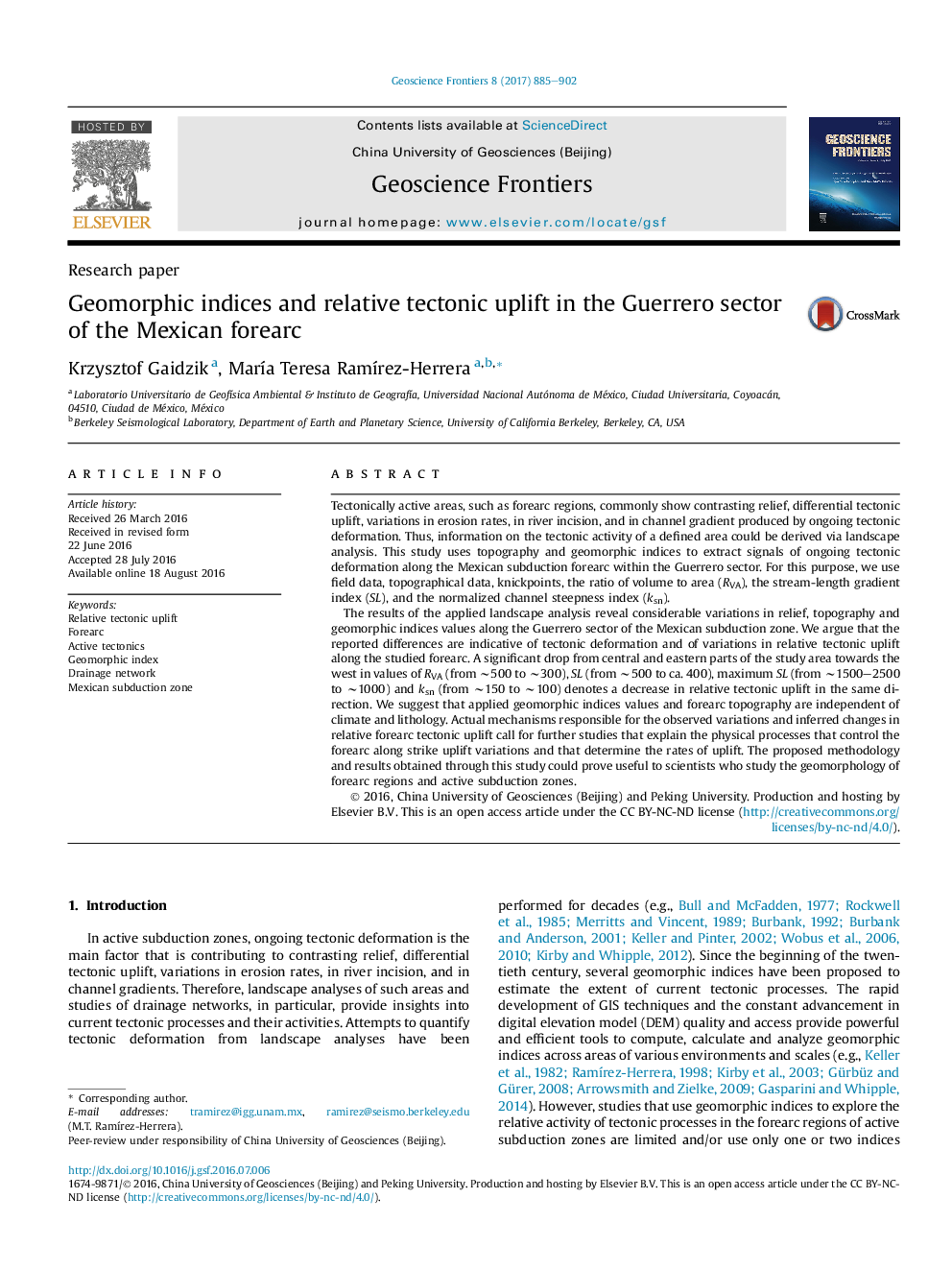| کد مقاله | کد نشریه | سال انتشار | مقاله انگلیسی | نسخه تمام متن |
|---|---|---|---|---|
| 5780257 | 1413812 | 2017 | 18 صفحه PDF | دانلود رایگان |
- Landscape analysis assists in extracting signals of relative forearc uplift.
- Topography and geomorphic indices reflect uplift variations.
- Relative tectonic uplift along forearc shows a general E-W decreasing pattern.
Tectonically active areas, such as forearc regions, commonly show contrasting relief, differential tectonic uplift, variations in erosion rates, in river incision, and in channel gradient produced by ongoing tectonic deformation. Thus, information on the tectonic activity of a defined area could be derived via landscape analysis. This study uses topography and geomorphic indices to extract signals of ongoing tectonic deformation along the Mexican subduction forearc within the Guerrero sector. For this purpose, we use field data, topographical data, knickpoints, the ratio of volume to area (RVA), the stream-length gradient index (SL), and the normalized channel steepness index (ksn).The results of the applied landscape analysis reveal considerable variations in relief, topography and geomorphic indices values along the Guerrero sector of the Mexican subduction zone. We argue that the reported differences are indicative of tectonic deformation and of variations in relative tectonic uplift along the studied forearc. A significant drop from central and eastern parts of the study area towards the west in values of RVA (from â¼500 to â¼300), SL (from â¼500 to ca. 400), maximum SL (from â¼1500-2500 to â¼1000) and ksn (from â¼150 to â¼100) denotes a decrease in relative tectonic uplift in the same direction. We suggest that applied geomorphic indices values and forearc topography are independent of climate and lithology. Actual mechanisms responsible for the observed variations and inferred changes in relative forearc tectonic uplift call for further studies that explain the physical processes that control the forearc along strike uplift variations and that determine the rates of uplift. The proposed methodology and results obtained through this study could prove useful to scientists who study the geomorphology of forearc regions and active subduction zones.
409
Journal: Geoscience Frontiers - Volume 8, Issue 4, July 2017, Pages 885-902
